The School Opens
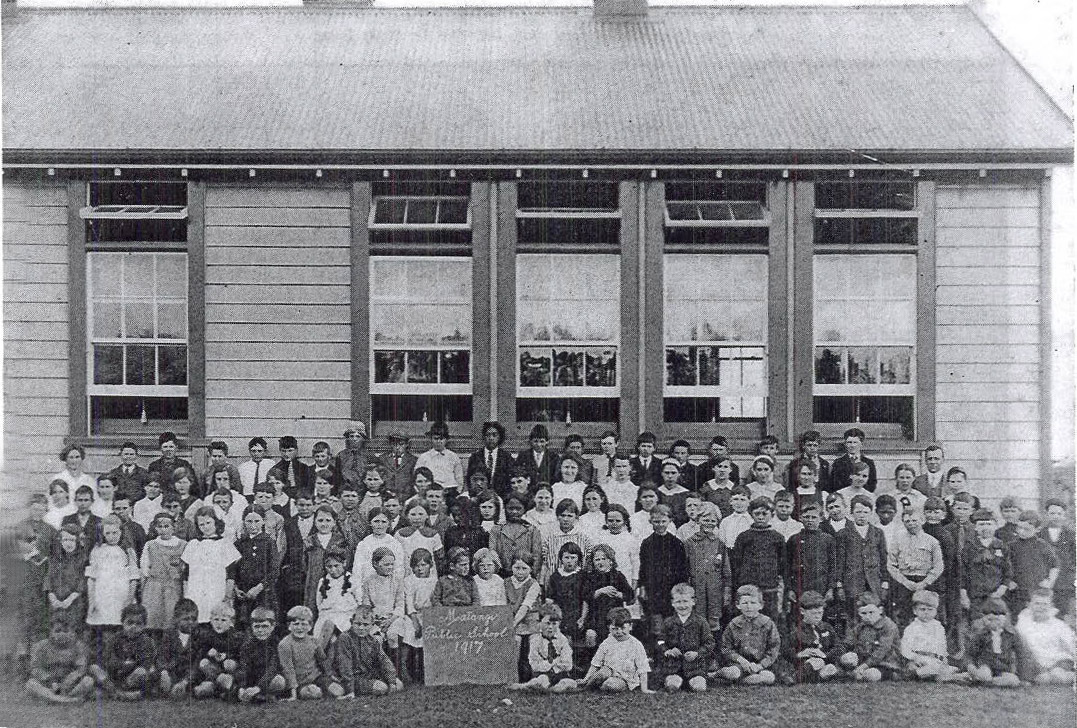

It is well documented that the Matangi School opened for its first pupils in 1910 at the Matangi Hall. It is also well known that the opening of the school was instigated by local parents. Research shows that at about this time this was the way schools were established - parents would petition for a school, a site would be acquired and within a year or so a building would be erected and school would be under way. However, things went differently at Matangi. After the turn of the century Matangi went through a period of consolidation. Land had been cleared and drained and dairy farms were well established. The dairy factory dealt adequately with the local farmers' milk, and formed the nucleus of the village. A Post Office was operating in Mr Worthington's store and with the building of the hall in 1904 and the change of name of the railway station in 1906, Matangi was now a real community.
A search of the first school roll shows that most of the first day pupils had been attending Marshmeadows (now Newstead) School, which opened in 1890. These pupils would have travelled by the 9.25 a.m. train to Newstead Station, then walked up the main road to the school, arriving late. They then would have had to leave early in order to catch the 2.40 p.m. train back to Matangi. It was this unsatisfactory state of affairs which led to the local parents petitioning for a school at Matangi.
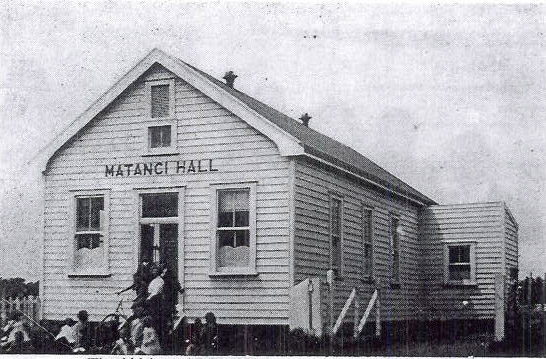
The school opened with 39 pupils on 1st February 1910 in the Matangi Hall. By the end of February there were 49 pupils, and by the end of the year the roll had leapt to 77. One must admire the teachers of the day trying to cope with such large numbers of children, whose ages ranged from 5 to 15, in a public hall. Facilities were practically non-existent, and there were no playing fields. However, the roll continued to grow and in 1914 the Education Board approved the building of a shelter shed at the rear of the hall, to be built on skids so it could be moved to a different site when a permanent school building was built. Eventually, on the 15th February 1917, a contract was let for the building of a school for seven hundred and sixty nine pounds ($1,538.00). This consisted of two classrooms, 24'00" x 22'6" (7.20m x 6.75m), a porch, two shelter sheds and toilets. This building was sited alongside the dairy factory and was designed to hold 100 pupils. However, the roll had crept up to 108 by the time the new building was occupied and during 1917 a further 75 students were enrolled. Here again, Matangi departs from the norm. Very few schools were built during the period of the First World War, but Matangi seems to be an exception, it was obvious that there was a large population of school children who had to be catered for, and with them undoubtedly a militant group of parents who had been trying for seven years to get the school built. The new two room school, however, was not big enough, as until the school was moved and the new room added, one class of children continued to be taught at the hall.
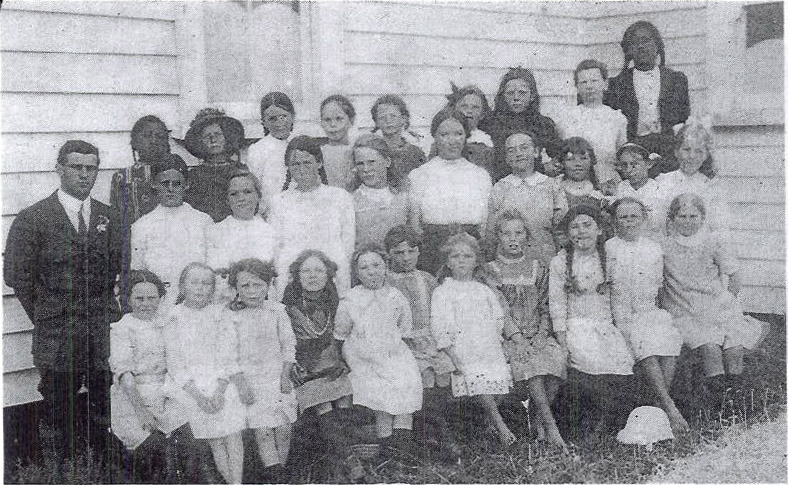
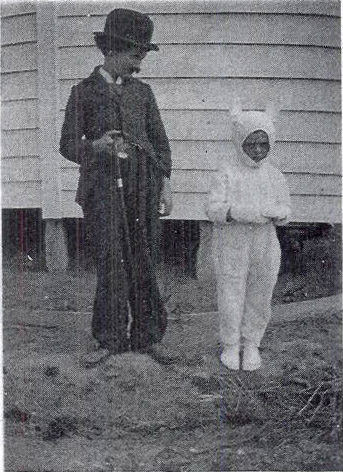
On the Move
The year 1919 saw a lot of activity in Matangi with the building of the new Glaxo Factory and houses for workers. At the time it was the most modern dairy factory in the southern hemisphere, according to the newspapers of the day and the increase in traffic and noise made the school's site, right next door, quite unsuitable. Another prime reason for the move was due to the fact that the washing down water and sewerage from the factory flowed down a drain past the school causing a health hazard.
It was decided to move the school and on 24th February 1920, the present school site was sold to the Education Board by Mr David Taylor and once more the school was on the move. The school building was jacked up and winched to its present site. A photo taken of the just moved building proudly states "220 panes of glass in the building, and not one broken". As soon as the school was in place a third classroom was added to cope with the ever-increasing roll, as well as a 10'0"x 9'0" (3m x 2.7m) teachers room and corridor space. The shelter sheds were moved into position and new toilets erected. An Education Board ruling at the time stated that toilets must be at least one chain (about 50m) from the school building and one chain apart. The girl's shelter shed and toilet block was sited against the west boundary near where the church now is, and the boys' facilities were further back where the incinerator now is. What an unpleasant journey it must have been in wet weather with the wind blowing over the then bare playing fields.
The 20's and 30's
The school now settled into a routine. With three teachers and three classrooms there was a bit more room to spread out. Now that the school was on its new site some time and effort could be spent making playing fields and beautifying the grounds. How different school must have been in those days. Some pupils stayed at primary school up to the age of 16. Few pupils went on to High School, and a lot of the girls left school to undertake "home duties", while many of the boys helped on the family farm. Of the original 39 pupils only 10 went on to High School.
In the 1920's, the school competed for a Forestry Shield. The competition was held throughout the Waikato and schools planted Lawsoniana, Macrocarpa and Gum trees, in a competition for the best forest. Matangi School was successful in winning the shield on several occasions.
The school also entered the Waikato Winter Show Choir Competitions. This was a very popular event once again attracting entries from all over the Waikato, and held in conjunction with the Winter Show. The B Choir won the Cup in 1923, 1924 and 1927 and the D Choir won the Cup in 1929 and 1931. The competition seems to have ceased in about 1933, and the D Choir. Cup was recently unearthed in the bottom of a cupboard at school. Matangi were the last winners of the cup and 54 years later are still holding it.
The children who lived beyond walking distance from the school, arrived at school by a means of transport that the modern child would think of as unusual, by horse. In those days of course it was the normal means of transport, and to accommodate the horses, the back half of what is now the soccer and rugby field was the horse paddock.
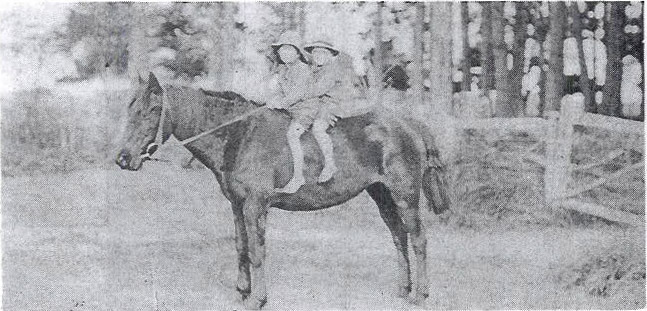
A fence and a line of trees separated the paddock from the playground. One family used to come to school in a rubber-tyred buggy, with four seats, drawn by a Shetland pony. Getting to and from school was not without its hazards as the following cutting from a 1934 newspaper shows:
Fall into Creek
Little Girl's Accident
Saved by Schoolmate
The prompt action of a schoolmate, Frank Dunham, aged about nine years, saved the life of Dawn Hirst, aged six years, when she fell from the railing of a bridge into a deep creek at Matangi. The little girl, who was accompanied by several other children, was on her way home from school when the mishap occurred. They stopped at the bridge over the creek to play and Dawn was leaning on the railing when it gave way, precipitating her into the water ten feet below.
In falling she struck the side of her head, and was below the surface when the boy Dunham dived into the water and brought her to the bank. Assisted by the other children, he carried her to the home of her parents, Mr and Mrs H. Hirst, about a mile away.
The little girl was not seriously affected by the experience, her injuries being principally confined to a bruise on the side of her head.
Appreciation of the manner in which Frank Dunham went to assist their daughter has been expressed by her parents.
Consolidation
With the roll around the 150 mark during the late 1930's, there would have been little room left for any other furniture than desks, as there would have been 50 children to each classroom. A fourth classroom was added, but even so by 1949 one class was having lessons in a curtained off section of the corridor for the first term. During the second term one class moved across the road to the church hall for lessons. It was during that year that Saturday closing of shops was introduced, and the headmaster sternly noted that there was a lot of half-day absences from school for new boots, haircuts, etc.
Calf Club day had always been a highlight of the year in a country school, with children taking their pet calves through their paces, and taking part in displays of or art and sewing. In 1949 the school had seven entries in the A. and P. Show and took four firsts and three seconds. The school also won the Champion Group Cup and the A. and P. Shield for scoring the largest number of points at the Show for school exhibits. At this time the school used to close for the day so pupils could attend the A. and P. Show.
In 1946 the building of a Dental Clink was first discussed but the post-war shortages of material meant the building was deferred until 1950 and the Clinic was opened in early 1951. This flurry of building had just finished when work started on another classroom and staffroom. Building started in February 1951, and several other alterations were made at the same time. More stoves were installed, the old staff room was converted into an office, teachers cloakrooms were built and an additional outside door was put in. Children were once again having lessons in the church hall owing to insufficient classroom space. Considerable difficulty was being experienced by the builders in getting some materials owing to shortages, but the cement and roofing iron seem to have arrived just in time.
The school roll peaked at 250 in 1953 and would have stretched the school facilities to their limits. In February 1955 the Ngati Haua School was opened for Maori children. This school had been discussed since 1948 and its opening relieved overcrowding at Tauwhare, Matangi and Goodwood Schools. The roll from this time dropped gradually and by 1961 was down to a more manageable 143.
In 1962 a new toilet block was built next to the school, thus ending the trek to the old toilets by the boundary fence. Oddly, the boys toilets came into use straight away, but the girls toilets were not in use until 1966, presumably because of a shortage of fittings. The first bike stand was installed, there now being enough cyclists to warrant a 20-cycle rack.
In 1967 a new and innovative headmaster organised the children into houses - Mars, Pluto and Venus, and they started to do the cleaning of the school. The cleaning money went towards buying school equipment, library books, musical instruments and books. 1967 also saw the parents vote to cease the milk in school scheme which had been running for many years. The old milk box was moved from next to the front gate and even today is a part of the junior children's adventure playground. With the removal of the milk stand the new front fence and entrance was built. There was no Calf Club day in 1967 because with the falling number of dairy farms fewer children had access to calves. However, the following year the day was reinstated and renamed Pet Day. Children were encouraged to bring other pets, and beside competition for calves, goats and lambs, children display their dogs, cats, guinea pigs and birds, and there is a display of cooking and floral art.
1968 saw another flurry of building activity - Room 1 pupils moved to the church hall while renovations to their classroom began. This is one of the original classrooms and it was enlarged by about three metres and its fireplace repositioned. Then Room 2 pupils went through the same exercise while their room was renovated. The office was also enlarged at the same time. An old shelter shed which had been converted into a storage shed burnt down one evening in November. The fire was thought to have been started by a spark from the incinerator, and in spite of the Hamilton Fire Brigade and Dairy Factory Brigade's prompt arrival, the shed and its contents were unable to be saved.
The arrival of a new head teacher in 1969 brought change immediately in one area - the children stopped their cleaning duties and cleaners were employed. The initial enthusiasm apparently wore off very quickly.
In 1971 with the opening of Berkley Intermediate School, the school roll dropped by 45, and for the first time fell to below 100. Consequently the teaching staff was reduced to three. Fortunately by October the roll had risen to 112 and a fourth teacher was reinstated. Although subsequently the numbers have dropped to as low as 70, the new staffing ratios have meant that the fourth teacher has been retained.
Since the 1951 additions, little of the outward appearance of the school has changed. The bicycle shed blew down in a storm during the August holidays in 1970, and it was rebuilt with the salvaged materials. This became known as the "red shed" until it was upgraded and repainted recently. More renovations in 1978 saw exit doors put into all classrooms, new windows in Rooms 3, 4 and 5 and relining of Room 3. A feature garden was put in near the flagpole and shelter belts planted along the western and northern boundaries. The new adventure playground was built and the playing fields were top dressed and resown in 1980. New posts around the tennis courts have improved the appearance of the driveway and flower gardens give the entrance a more attractive look. Inside, new colour schemes, wallpaper and carpets in all the classrooms give the school a more home-like atmosphere.

